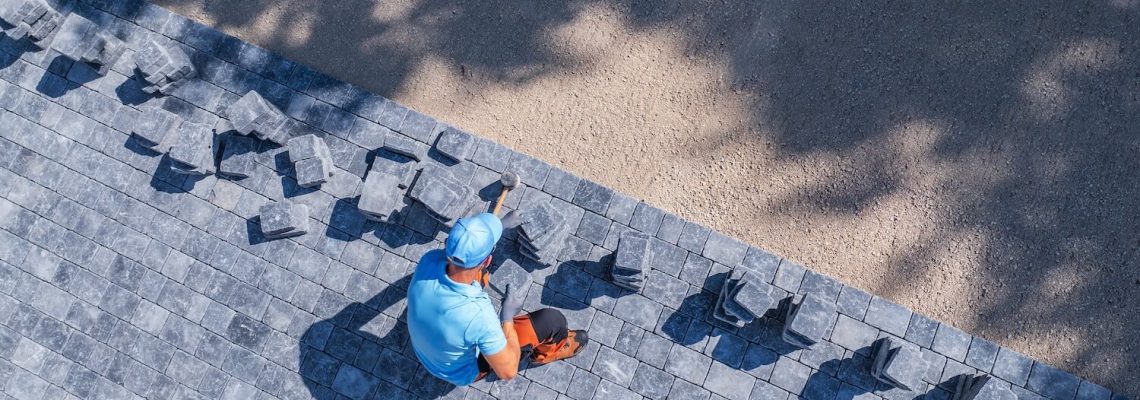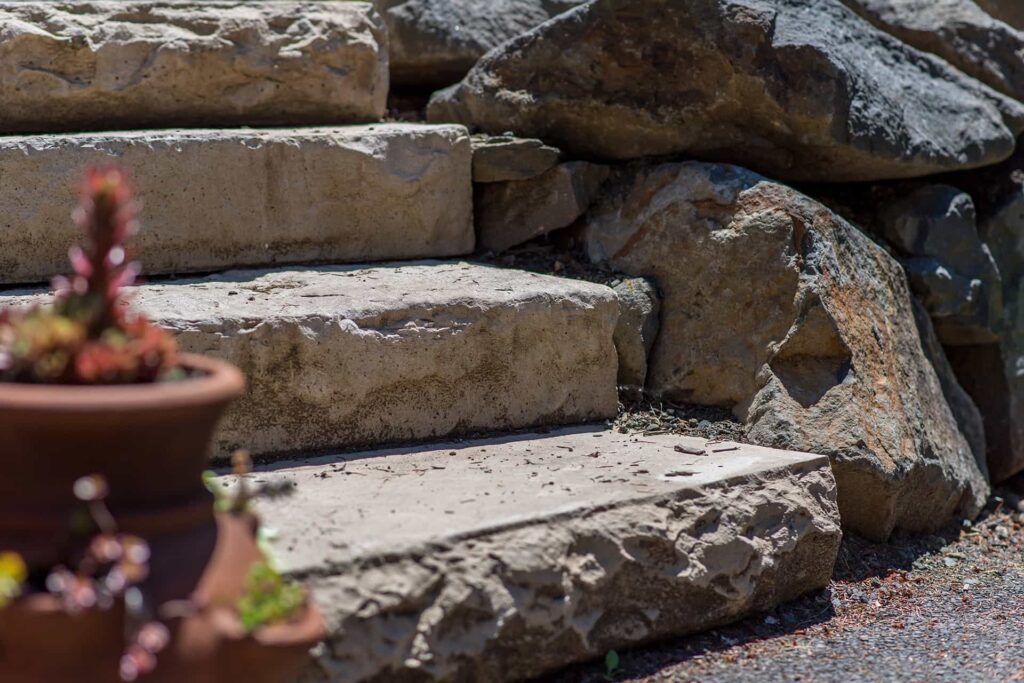When deciding between pavers and concrete for outdoor hardscaping projects, many homeowners and businesses often lean toward the convenience and lower initial cost of concrete. However, while concrete may appear to be the simpler option upfront, pavers offer far greater benefits when it comes to longevity, strength, and durability. If you’re looking for a surface that will withstand the test of time, hold up to wear and tear, and continue to look great for years to come, pavers are the clear winner.
In this comprehensive guide, we’ll explore the key differences between pavers and concrete, highlighting how pavers outperform concrete in several crucial areas.
From cracking resistance to the ability to handle extreme weather conditions, pavers excel where concrete often falls short. With a focus on longevity, strength, and overall durability, this article will help you understand why pavers are a superior choice for your next paving project.
1. The Fundamental Differences Between Pavers and Concrete
Understanding the basic differences between concrete and pavers will give you a deeper insight into why pavers offer superior performance in terms of longevity and strength.
Concrete
Concrete is a monolithic material, meaning it is one solid structure, typically poured into a mold to form a uniform surface. While it can be reinforced with steel rebar for added strength, its continuous nature makes it vulnerable to cracks and fissures when subjected to movement, shifting, or other stressors. Concrete is commonly used in driveways, patios, and walkways, but it is prone to surface issues that develop over time.
Pavers
Pavers, by contrast, are individual units—small blocks made of concrete, clay, or natural stone that interlock to form a sturdy surface. These units fit together tightly but are not bound by mortar, allowing them to shift and adapt to the natural movement of the ground beneath them. Because of their interlocking design, pavers offer a much more flexible surface than poured concrete, which directly contributes to their strength and longevity.
2. Longevity: Pavers Last Longer Than Concrete
When it comes to longevity, pavers outshine concrete in almost every respect. Several factors contribute to the extended lifespan of pavers, making them a worthwhile investment for anyone looking for a surface that will withstand the rigors of daily life.
Flexibility and Resistance to Cracking
One of the primary advantages of pavers is their resistance to cracking. Concrete is a rigid material that can crack under pressure. When subjected to environmental stresses such as temperature fluctuations, soil movement, or heavy loads, concrete surfaces are prone to developing cracks. Over time, these cracks can worsen, and repairs often involve costly resurfacing or replacement.
Pavers, on the other hand, offer unparalleled flexibility. Since they are individual units that fit together, they can shift and move as the ground beneath them shifts. This adaptability prevents cracking, as the surface can adjust to settling, freezing and thawing, or minor shifts in the ground. Even if a paver becomes cracked or damaged, it can easily be replaced without needing to replace the entire surface.
Real-world example: In regions with frequent freeze-thaw cycles, such as the northeastern United States or parts of Canada, concrete driveways often suffer from unsightly cracking due to the expansion and contraction of frozen water beneath the surface. Pavers, however, perform better in these conditions, thanks to their flexibility and permeability, which allow for water drainage and reduced frost damage.
Freeze and Thaw Resistance
In colder climates, the freeze-thaw cycle can be incredibly destructive to concrete surfaces. When water seeps into small cracks or pores in the concrete and freezes, it expands, causing the concrete to crack further. Over time, this repeated freeze-thaw cycle can break down the concrete, leading to significant surface damage.
Pavers perform better in such climates. Thanks to their jointed design, water can flow through the gaps between the pavers instead of being trapped in the material. This allows water to drain away, reducing the chances of water freezing beneath the surface. Additionally, the interlocking design allows pavers to move and shift as the ground freezes and thaws, preventing the formation of cracks and protecting the surface from damage.
Example: In places like Minnesota, where winters are harsh and freezing temperatures persist for months, concrete driveways often require expensive repairs due to the freeze-thaw cycle. Pavers, however, continue to thrive in these conditions and provide lasting durability year-round.
Reduced Maintenance Needs
Pavers generally require far less maintenance compared to concrete. While concrete needs to be regularly sealed to protect it from stains and cracking, pavers are naturally more resistant to staining and fading. Over time, the surface of concrete can become worn, requiring costly resurfacing or repairs.
In contrast, pavers maintain their strength and aesthetic appeal for years. If individual pavers become damaged due to heavy impact, stains, or wear, they can be easily replaced with new ones without disrupting the entire surface. Additionally, pavers require less sealing than concrete, and their durability means they require fewer repairs over their lifespan.
3. Strength: Pavers Are More Durable Than Concrete
While concrete is a strong material, pavers provide superior strength in several critical areas. Their durability makes them the ideal choice for surfaces exposed to heavy use and extreme conditions.
Weight Distribution and Load-Bearing Capacity
One of the primary advantages of pavers over concrete is their ability to distribute weight more evenly. Concrete is a solid slab, which means that any weight applied to a specific spot is concentrated, increasing the risk of cracks, dents, or surface damage. Pavers, by contrast, interlock with one another, allowing weight to be distributed more evenly across the surface. This means that pavers can handle much heavier loads, from heavy vehicles to large outdoor equipment, without sustaining damage.
Real-world application: In high-traffic areas like commercial driveways or parking lots, concrete slabs often crack under the weight of vehicles. Pavers, on the other hand, have the strength to withstand the daily wear and tear without the risk of cracking. This makes them a popular choice for both residential and commercial projects.
Strength Impact Resistance
In environments where heavy objects may be dropped or dragged across the surface, pavers are less likely to suffer damage than concrete. Concrete can easily crack or chip upon impact, especially if the surface has weakened over time. Pavers, however, absorb impact better, thanks to their interlocking design and the fact that they are individual units that can shift and adjust under pressure.
This makes pavers ideal for areas such as driveways, patios, and pool decks where people may accidentally drop items or where the movement of heavy machinery or equipment is common. Even in the event of a dropped tool or heavy object, pavers can endure impacts without showing signs of damage.
Resistance to Staining and Fading
Concrete surfaces are porous, meaning they can absorb liquids and stains, such as oil, grease, or food spills. Once stains penetrate the surface, they can be difficult to remove, and the concrete often requires specialized cleaning or resurfacing. Concrete is also prone to fading, particularly when exposed to sunlight over long periods.
Pavers are more resistant to staining, especially when made of high-quality materials like clay or natural stone. They do not absorb liquids as easily as concrete, making it easier to maintain their appearance. Additionally, pavers are available in a wide range of colors and textures that retain their vibrancy over time. Many pavers are also sealed during installation, further enhancing their stain resistance.
4. Cost-Effectiveness in the Long Run
At first glance, pavers may seem more expensive than concrete due to their higher material costs and labor-intensive installation process. However, when considering the long-term benefits of pavers, they provide excellent value for money. Their extended lifespan, reduced maintenance requirements, and ease of repair all contribute to their cost-effectiveness.
While concrete may have a lower upfront cost, the ongoing maintenance and repair expenses can quickly add up. If you factor in the cost of resealing, repairing cracks, and replacing damaged sections, concrete may ultimately prove to be more expensive in the long run. Pavers, by contrast, require minimal maintenance and can often be repaired on an as-needed basis, making them more cost-effective over time.
5. Aesthetic Appeal and Design Flexibility
Pavers also have the advantage when it comes to aesthetic appeal and design flexibility. Concrete surfaces are often limited to standard gray slabs, although various treatments can be applied to enhance their appearance. However, pavers offer an endless array of color, shape, and texture options, allowing homeowners to customize their outdoor spaces to fit their personal style.
Pavers can be arranged in an infinite number of patterns and designs, from classic herringbone and basketweave to more modern, geometric patterns. Whether you’re creating a traditional driveway or a contemporary patio, pavers offer unmatched flexibility in terms of design.
6. Environmental Benefits of Pavers
In addition to their durability and strength, pavers offer significant environmental benefits. One of the most important advantages is their permeability. Pavers allow rainwater to pass through the joints between them, reducing runoff and helping to replenish groundwater supplies. This permeability can help mitigate the effects of flooding and reduce pressure on local drainage systems.
Concrete, on the other hand, is impermeable, which means that water flows off the surface rather than being absorbed. This can lead to increased runoff, erosion, and the potential for flooding.
Conclusion: Pavers Are the Superior Choice
While concrete may be a common choice for many homeowners and businesses, pavers offer far greater benefits in terms of longevity, strength, and overall durability. Their ability to resist cracking, handle heavy loads, and adapt to shifting ground make them the ideal option for driveways, patios, walkways, and other outdoor surfaces. Pavers are not only more durable but also more aesthetically appealing, offering a wide range of design options to suit any taste.
In the long run, investing in pavers will save you money on repairs, maintenance, and replacements. Whether you’re installing a new patio, a driveway, or a commercial walkway, pavers provide the best combination of performance, durability, and beauty.
If you’re ready to explore how pavers can transform your outdoor space, consider working with a professional installation team like Stone Paving Inc. They’ll ensure that your pavers are properly installed to maximize their longevity and strength, giving you a durable and beautiful surface that will last for many years to come.


